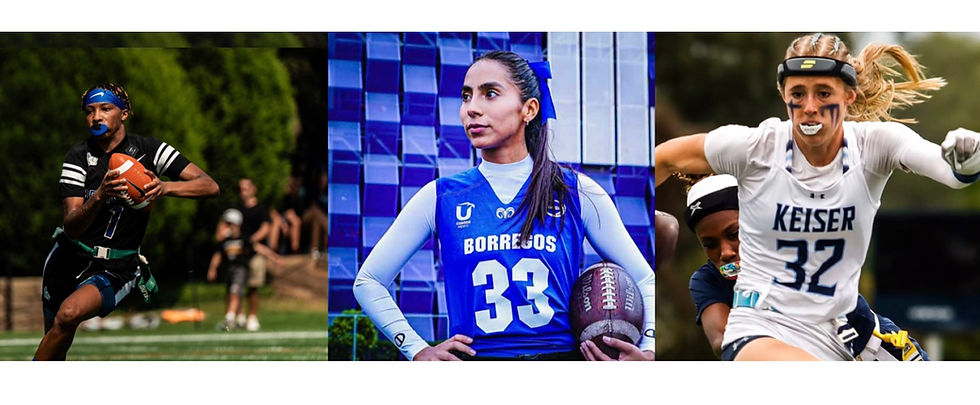The Hoops Battle: NIL v. G-League
- Britton Yoder
- Jul 22, 2021
- 3 min read
Updated: Sep 2, 2022
It is well-known and well-contemplated how the new Name, Image and Likeness laws and regulations will affect the wide world of sports. One effect that may be felt within the coming years is a stifled outlook for the NBA G-League, the developmental league for the National Basketball Association (NBA).
The NBA G-League
In 2019, the NBA had announced that the G-League would be offering “Select Contracts” of $125,000 to high school graduate athletes they considered to be elite. They would later increase this amount to make themselves a more attractive option. This would offer a new path for high-level high school prospects to develop themselves and get ready for the NBA Draft. The most prominent example was number one overall high school prospect Jalen Green, who signed with the G-League Ignite for $500,000 in 2020 instead of taking the college route.
This aspect of the G-League set itself apart from the NCAA by giving elite basketball prospects the opportunity to make money right away. No tired regulations or risks of losing eligibility for endorsement deals, either, as they were allowed to enter into them immediately. It has proven to be an attractive option for some of the nation’s biggest high school basketball stars, but will its advantageous luster fade with the ushering in of the new NIL era?
The G-League’s New Top Competitor
Though entering into the G-League had its various advantages over the collegiate route, they also had distinct disadvantages. For instance, the only athletes who were initially considered had to be classified as “elite.” This drastically narrows the pool of talent the G League can pick from. Perhaps the NCAA’s biggest advantage lies within media exposure, where the G League pales in comparison. With the opening up of endorsement opportunities, this advantage becomes more apparent than ever.
So, how will the G-League separate itself heading into this new era? There has already been a large investment into the advancement of the developmental league. Aside from the large playing contracts, there were promises of paying scholarships, establishing developmental academies, and much more. The G League has spent millions on recruiting these elite athletes and could be losing out on this investment as the NIL era immediately positions the NCAA as the G-League’s top competitor.
What’s Next?
Luckily, all is not lost for the NBA G-League. It doesn’t look as though the league needs to completely reposition itself. It still has enough power in its current positioning to obtain some of the game’s best talent. Its offerings of financial literacy and life skills training paired with elite basketball development are still miles ahead of many collegiate basketball programs. Being able to play against professional-level athletes is a major advantage, as is the guarantee of playing alongside other top recruits from your class.
I believe the G League is primed to make aggressive moves in the near future to compete with the NCAA even more effectively. Few know exactly what these moves will look like. I can speculate, however, that the G League may try to “retool and readjust” itself in multiple ways.
Whereas the NCAA promises a new era of NIL, the G League would be wise to frame itself as the “reliable option.” For instance, many states are passing restrictive Name, Image and Likeness laws for college athletes with no active enforcement mechanisms. At the moment, these laws, and the punishments for violating them, remain uncertain. The developments in this could be volatile. The G League provides a virtually restriction-free endorsement market for its athletes, who are not subject to these statutes at the professional level.
Additionally, as the NCAA provides history and development, the G-League can point out how history may be moving away from the sport of college basketball. Times are changing and the G-League plans to change with them. The G-League also has endless resources at their disposal to make aggressive pushes towards legendary coaches, scouts, and other development facilitators to separate itself further from the NCAA.
Though the Name, Image and Likeness era may seem to be a major roadblock for the G-League, it actually gives it a chance to emphasize its numerous advantages over the NCAA. It also provides a chance for the league to become even more aggressive and push itself further ahead. I, for one, am extremely excited to see what lies ahead.
Britton Yoder is a rising 1L at Penn State Dickinson Law
For inquiries, email byoder40.by@gmail.com







EPS Machine EPS Cutting…
EPS Machine Eps Raw…
EPS Machine EPS Recycling…
EPS Machine EPS Mould;
EPS Machine EPS Block…
EPP Machine EPP Shape…
EPTU Machine ETPU Moulding…
EPS Machine Aging Silo…
EPTU Machine ETPU Moulding…
EPS Machine EPS and…
EPS Machine EPS and…
AEON MINING AEON MINING
AEON MINING AEON MINING
KSD Miner KSD Miner
KSD Miner KSD Miner
BCH Miner BCH Miner
BCH Miner BCH Miner
EPS Machine EPS Cutting…
EPS Machine Eps Raw…
EPS Machine EPS Recycling…
EPS Machine EPS Mould;
EPS Machine EPS Block…
EPP Machine EPP Shape…
EPTU Machine ETPU Moulding…
EPS Machine Aging Silo…
EPTU Machine ETPU Moulding…
EPS Machine EPS and…
EPS Machine EPS and…
AEON MINING AEON MINING
AEON MINING AEON MINING
KSD Miner KSD Miner
KSD Miner KSD Miner
BCH Miner BCH Miner
BCH Miner BCH Miner
EPS Machine EPS Cutting…
EPS Machine Eps Raw…
EPS Machine EPS Recycling…
EPS Machine EPS Mould;
EPS Machine EPS Block…
EPP Machine EPP Shape…
EPTU Machine ETPU Moulding…
EPS Machine Aging Silo…
EPTU Machine ETPU Moulding…
EPS Machine EPS and…
EPS Machine EPS and…
AEON MINING AEON MINING
AEON MINING AEON MINING
KSD Miner KSD Miner
KSD Miner KSD Miner
BCH Miner BCH Miner
BCH Miner BCH Miner